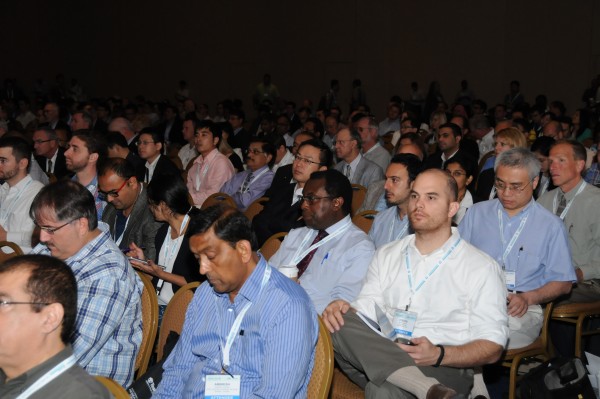ISGT North America: Global Smart Grid Innovation
This year’s ISGT conference was another resounding success. Held over 4 days from Feb 17-20 in Washington, DC, the conference featured multiple keynotes, more than 160 papers, 24 panel sessions, several tutorials and a very well received poster session. With Conference Chairman Prof. Saifur Rahman once again leading the event, and Dr. George Arnold as Technical Chairman, the 2015 ISGT conference hosted a better than expected turnout of 425 attendees despite significant ongoing weather challenges at the time.
“Smart Grid – Present and Future” was the overarching theme for the conference, which focused on the future migration path for the smart grid as new and emerging technologies converge with power system developments to create smart energy systems. The relevancy of this theme became clear during the course of the event, with fresh and exciting new ideas being presented for the first time. One item of particular interest was a multi-session focus on the “Trustworthiness of Smart Grids”. The session focused on the critical dependence society has on new technologies being introduced into the grid and ways to mitigate the complexities of a grid system that’s becoming more reliant on long-distance, high-volume and highly reliable data communications.
The poster sessions at IEEE PES and ISGT conferences have proven to be exceptionally innovative, and this year followed suit. It was refreshing to see so many young people present innovative ideas on how we can bring new technologies into play in our more than 100-year old industry. One poster that caught my attention – “A Unified Platform Enabling Power System Circuit Model Data Transfer Among Different Software” – attacked the problem of gathering data from multiple sources and converting them into a common, interoperable format to feed multiple simulation and modeling tools. This poster defined the numerous tools required to model the various devices, control strategies, and power systems phenomena present in today’s smart grid and showed that organizing the input data for those tools is a daunting task.
Moving to another agenda item, it was my pleasure to once again have been the ISGT Tutorial Chairman, as tutorials have always played an important role in the conference. This year, we were able to solicit fresh content in the areas of Smart Distribution, Smart Substations, and Distribution System Automation and Management, and Grid Analytics, which was presented to a receptive audience by Larry Clark, David Burroughs, John McDonald, Doug Houseman and their supporting co-presenters.
In addition to the high quantity and quality of technical content at this year’s ISGT, there was also an emphasis on industry/government practices for smart grid that was very valuable. In particular, the plenary panel on the second day – State and Local Government Policies Driving Smart Grid Adoption – offered up a breadth of views expressed by practitioners, regulators and industry engineers that proved to be meaningful for ongoing discourse. The plenary panel on the third day – Smart Grid Evolution – Technology, Policy and Regulation – brought out futuristic issues new business developers in the smart space will find relevant when thinking about future business models.
Although it isn’t as good as being there, all of the PPT slides used by the panelists have been submitted to PES HQ for posting on the PES Resource Center, and should be available for downloading soon.
Please note that in addition to the yearly North American version of the ISGT Conference, ISGT Conferences are global in scope. ISGT Latin America will be held in Montevideo, Uruguay, October 5-7; ISGT-Europe will be held in Warsaw, Poland, October 21-25; and ISGT-Asia will be held in Bangkok, Thailand November 4-5. These conferences provide a useful forum for participants to discuss state-of-the-art innovations in smart grid technologies and are sure to be just as interesting and valuable as this years ISGT 2015 North America.
Erich W. Gunther

